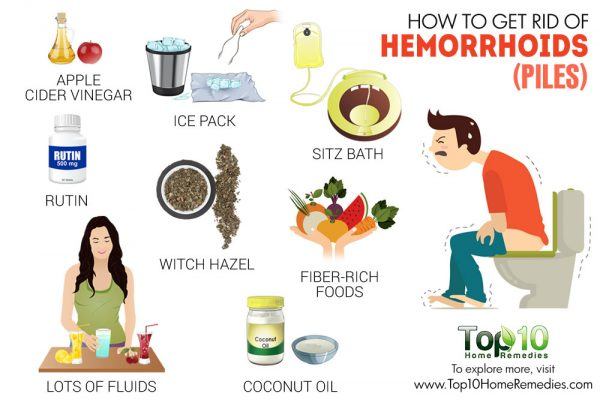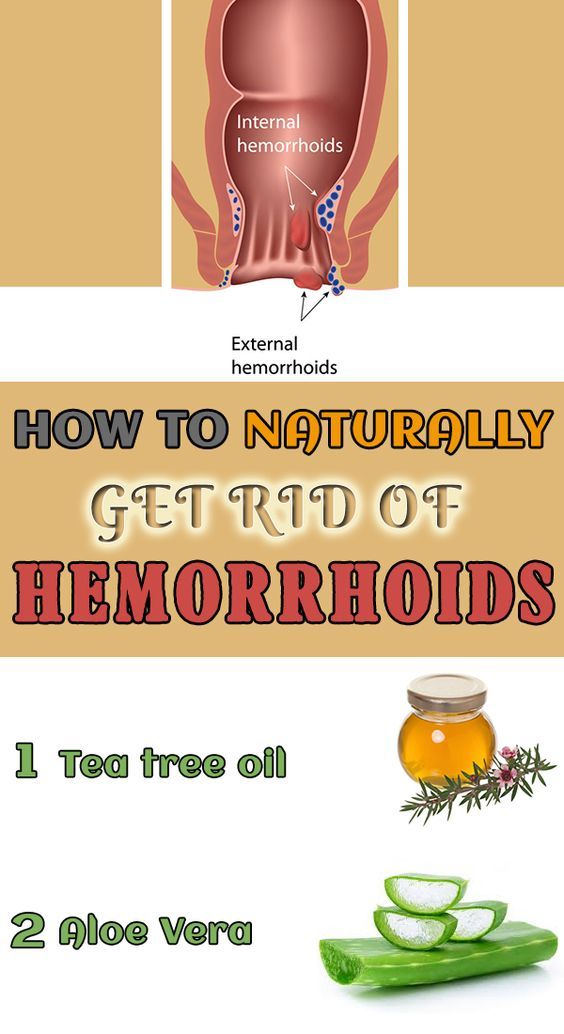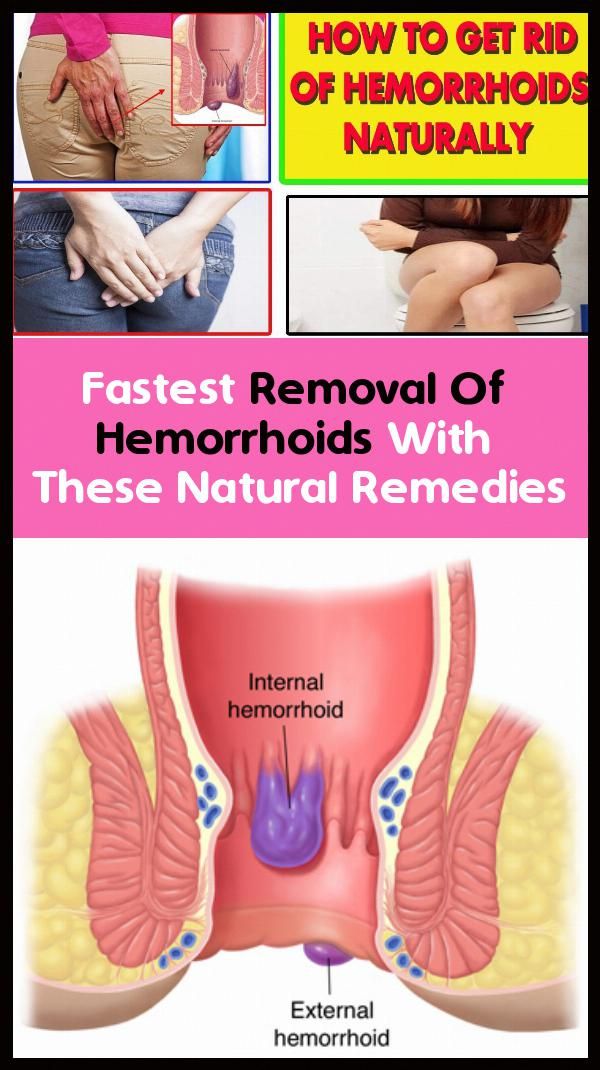Effective External Hemorrhoid Treatment Options
If at-home treatments arent enough to soothe your recurring symptoms and you are tired of dealing with external hemorrhoids, it might be time to consider a professional treatment option. While usually longer-lasting than other types of treatments, many of these options have their own complications to consider.
Here are three of the most common, but invasive, hemorrhoid treatment options:
What Should I Eat If I Have Hemorrhoids Diet
Individuals with hemorrhoids should soften their stools by increasing the fiber in their diets.
Fiber is found in numerous foods, including
- fresh and dried fruits,
- whole grains, and
- cereals.
In general, 20 to 30 grams of fiber per day is recommended, whereas the average American diet contains less than 15 grams of fiber. Fiber supplements, like psyllium, methylcellulose, and calcium polycarbophil, also may be used to increase the intake of fiber.
Stool softeners and increased drinking of liquids also may be recommended, as well as bulk-forming laxatives. Nevertheless, the benefits of fiber, liquids, and stool softeners have not been well-tested with respect to hemorrhoidal control in scientific studies.
Its Crucial To Rule Out Other Problems Besides Hemorrhoids
Most people who have hemorrhoids discover them by either feeling the lump of an external hemorrhoid when they wipe after a bowel movement; noticing drops of blood in the toilet bowl or on toilet paper; or
feeling a prolapsing hemorrhoid after bowel movements.
With a history of symptoms, physicians like those of us at Alabama Colon & Rectal Institute, can make an accurate diagnosis on the basis of an examination of the anus and anal area. We want to identify the hemorrhoids, but its also very important that we rule out other causes of hemorrhoid-like symptoms, such as: anal fissures, fistulae, bowel disorders like ulcerative colitis, blood coagulation disorders, perianal skin diseases, infections, and tumors.
We want to stress that you should not assume that rectal bleeding is due to hemorrhoids, especially if you are over 40 years of age. Rectal bleeding can occur with other diseases, including colorectal cancer and anal cancer. If you have bleeding along with a noticeable change in bowel habits or if your stools change in color or consistency, consult your doctor. These types of stools can signal more extensive bleeding elsewhere in your digestive tract. Seek emergency care if you experience large amounts of rectal bleeding, lightheadedness, dizziness or faintness.
What we can do about hemorrhoids & what to expect at your appointment
Prevention & treatment for hemorrhoids
You May Like: What Foods Cause Hemorrhoids To Bleed
When Should You Seek Medical Attention
While rare, if your symptoms continue after a week of home care, or if you are experiencing rectal bleeding, you should see your doctor.
Passing blood in your stool is most often from a hemorrhoid, but it can be from other problems including colon, rectal or anal cancer, Dr. Keeler said. You should not assume blood passing from the anal canal is not a big deal. This is particularly true for people over the age of 40, but these types of cancers are becoming more common in younger people. It is imperative that a health care provider is made aware of any bouts of passing blood from your anus.
Avoid Rubber Ring Cushions:

Most of the time, you will be advised to use rubber ring cushions when you sit. But you should know that it will worsen your problem and pain. It will increase pressure within the anus obstructing blood flow within the pelvic area. Hence, there will be more swelling and more pain due to increased pressure.;
Don’t Miss: How Do You Help Hemorrhoids
Causes Of External Hemorrhoids
The most common cause of external hemorrhoids is repeated straining during a bowel movement, leading to the veins of the anus or rectum becoming dilated or enlarged. Because external hemorrhoids result from excessive pressure in the rectums veins, certain factors can increase the chances of external hemorrhoids forming.
Some of the most common external hemorrhoid causes include:
- Pregnancy.
- Heavy weight lifting.
- Obesity.
Each of the above places added pressure on the rectal veins, which may eventually cause increased swelling in the external hemorrhoids. For example, in pregnant women, the uterus puts extra pressure on these veins and can cause them to enlarge. To reduce the likelihood of developing external hemorrhoids or prevent symptoms from worsening, limit the amount of time you spend on the toilet to two minutes and make sure you always practice proper form when heavy lifting.did
Do Hemorrhoids Always Bleed
No, hemorrhoids do not always bleed.;
Often, painless bleeding is a sign of the presences of inflamed internal hemorrhoids.;
While rectal bleeding is a common side effect, this symptom should still be reported to your doctor.;
Rectal bleeding is a symptom that can occur from many gastrointestinal disorders.
External hemorrhoids are one of the two types of hemorrhoids, and usually, these hemorrhoids do not produce blood.;
External hemorrhoids are small rubbery bumps located around the anal opening and cause pain, itching, and discomfort, though are not known to bleed unless they become thrombosed, meaning a blood clot can form inside of them.;
Blood clots can burst and result in bleeding, but this is rare.;
Recommended Reading: What Can I Do To Help My Hemorrhoids
What Are The Treatments For Hemorrhoids
If at-home treatments for hemorrhoids don’t help you, you may need a medical procedure. There are several different procedures that your provider can do in the office. These procedures use different techniques to cause scar tissue to form in the hemorrhoids. This cuts off the blood supply, which usually shrinks the hemorrhoids. In severe cases, you may need surgery.
How To Get Rid Of External Hemorrhoids Fast
This article was medically reviewed by Sarah Gehrke, RN, MS. Sarah Gehrke is a Registered Nurse and Licensed Massage Therapist in Texas. Sarah has over 10 years of experience teaching and practicing phlebotomy and intravenous therapy using physical, psychological, and emotional support. She received her Massage Therapist License from the Amarillo Massage Therapy Institute in 2008 and a M.S. in Nursing from the University of Phoenix in 2013.There are 19 references cited in this article, which can be found at the bottom of the page. This article has been viewed 200,993 times.
Hemorrhoids can happen to anyone at any age. These uncomfortable enlarged veins can be found inside or externally around the anus. Hemorrhoids are caused by increased pressure on your pelvic and rectal veins, usually linked to constipation, diarrhea, or straining to pass a stool. In some cases, hemorrhoids can be caused by obesity, lifting heavy objects, or from the strain of pregnancy which applies pressure to the veins of the lower abdomen. Fortunately, external hemorrhoids can usually be taken care of without seeing a doctor. There are several things you can do to help relieve the pain, discomfort, and itching of hemorrhoids.
Recommended Reading: How Can You Get Rid Of External Hemorrhoids
What Should You Know About Hemorrhoids
What are hemorrhoids?
Hemorrhoids are blood vessels located in the smooth muscles of the walls of the rectum and anus. They are a normal part of the anatomy and are located at the junction where small arteries merge into veins. They are cushioned by smooth muscles and connective tissue and are classified by where they are located in relationship to the pectinate line, the dividing point between the upper 2/3 and lower 1/3 of the anus. This is an important anatomic distinction because of the type of cells that line hemorrhoid, and the nerves that provide sensation.
What are the internal and external hemorrhoids?
Internal hemorrhoids are located above the pectinate line and are covered with cells that are the same as those that line the rest of the intestines. External hemorrhoids arise below the line and are covered with cells that resemble skin.
What are the symptoms of hemorrhoids?
Hemorrhoids become an issue only when they begin to swell, causing itching, pain, and/or bleeding.
Internal Vs External Hemorrhoids
When it comes to speaking about internal hemorrhoids, these are far inside the rectum. They dont hurt because of the sensitivity of the nerves. If you notice bleeding, it might be a sign that you have one.
External hemorrhoids, on the other hand, are present near the anus. Since the sensitive nerves are exposed, these may tend to hurt and bleed at the same time. In some instances, the person may suffer from prolapsed hemorrhoids that are pushed back internally.
A blood clot can occur in case of external hemorrhoids, but when the clot dissolves, the skin may start burning, and the person has to bear with the irritating sensation.
Hope you have learned everything about hemorrhoids. Feel free to share the health blog with someone seeking a way to remove external hemorrhoids.
Was this article helpful?
Recommended Reading: What Is The Best Medicine For Hemorrhoids
Do Bleeding Hemorrhoids Hurt
No, due to the lack of pain-sensing nerves in the lowest part of the rectum, fortunately, bleeding hemorrhoids do not hurt.;
Bleeding hemorrhoids are internal hemorrhoids that have become swollen and inflamed, and sometimes a hard stool can scrape these cushions, causing bright red blood to be produced.; External hemorrhoids, however, when they become thrombosed and burst can be painful.
What Is An External Hemorrhoid

Hemorrhoids happen when rectal venous structures swell. That can happen if you strain too hard in the bathroom or otherwise place too much pressure on this part of your body.
You can get hemorrhoids inside your rectum or around your anal opening. If you have a hemorrhoid that you can see or feel on the outside of the anus, it’s an external one.
Medical experts consider the dentate line to be the internal-versus-external transition point. Also known as the pectinate line, this line of demarcation is located about one-third of the way up the anus.
Read Also: How To Get Rid Of Anus Hemorrhoids
What Is Stapled Hemrroidectomy
The following are pictures of the stapled hemorrhoidectomy procedure.
- Picture of Hollow Tube Inserted into the Anal Canal and Pushing up the Hemorrhoids
- Picture of Internal Hemorrhoids in Anal Canal
- Picture of Suturing the Anal Canal through the Hollow Tube
- Picture of Bringing Expanded Hemorrhoidal Supporting Tissue into the Hollow Tube by pulling On Suture
- Picture of Hemorrhoids Pulled Back Above Anal Canal after Stapling and Removal of Hemorrhoidal Supporting Tissue
The Key To Avoiding Hemorrhoid Problems
The key to avoiding hemorrhoidal issues is maintaining a regular bowel movement with a soft stool. This can be helped in the following ways:
- Eat plenty of foods rich in fiber
- Drink plenty of fluids
- Maintain a healthy body weight
- Avoid traumatic insertion of objects into the anal canal
- Use stool softeners and regulators, as necessary
Regular use of laxatives should be avoided as the body can become dependent on these medications and create even bigger problems, Dr. Keeler added.
Don’t Miss: How To Remove Hemorrhoids At Home
Causes And Risk Factors Of Hemorrhoids
You may be more likely to get hemorrhoids if other family members, like your parents, had them.
Pressure building up in your lower rectum can affect blood flow and make the veins there swell. That may happen from:
- Pushing during bowel movements
- Anal sex
People who stand or sit for long stretches of time are at greater risk, too.
You may get them when you have constipation or diarrhea that doesn’t clear up. Coughing, sneezing, and vomiting could make them worse.
What Are The Causes Of External Hemorrhoids
The most common cause of hemorrhoids is repeated straining while having a bowel movement. This is often caused by severe cases of constipation or diarrhea. Straining gets in the way of blood flow into and out of the area. This results in the pooling of blood and enlargement of the vessels in that area.
Pregnant women may also be at an increased risk of hemorrhoids because of the pressure that the uterus places on these veins.
Don’t Miss: When Should You Go To The Hospital For Hemorrhoids
Preventing Constipation Is Key To Reducing Hemorrhoid Pain
Going to the bathroom shouldnt cause anxiety or pain, but hemorrhoids can cause these problems. To counteract this, you should try some preventative steps to stop problem hemorrhoids from hurting you in the first place.
Try tweaking your diet to include more vegetables and high-fiber foods. High fiber diets regulate your colon and reduce the frequency of bleeding hemorrhoids.
Drink more water to keep your colon healthy and your stools naturally softer. This should make going to the bathroom a strain-free process.;
If you happen to do exercises like weightlifting that puts excess pressure on your backside, you should regulate your workouts to relieve some of that pressure.
Taking these steps now can help you with painless bathroom breaks in the future. As we say at Doctor Butlers: Leave the Pain Behind!
About Doctor Cutler
Solving The Fiber Puzzle
More fiber and lots of water is a quick answer to what you should include on the menu if youre worried about hemorrhoids. Fiber comes in two types, however, and its the soluble fiber that keeps your stools soft but well-formed and easy to pass.
Found in foods like oats, soluble fiber dissolves into a gel-like substance when mixed with the water thats added during the digestive process. The second type of fiber is insoluble, sometimes called roughage. It adds bulk to your stool and keeps things moving through your system, but it does not dissolve.;;
Generally, Dr. Clemens recommends that about one-third of your daily fiber intake consist of soluble fiber. Many fiber-rich foods contain both types of fiber. And youll need 8-10 large glasses of water per day to keep all this fiber moving through your system.
Read Also: How To Rid Hemorrhoids Naturally
End Your Restroom Visit With Hemorrhoid Wipes
Rubbing too hard with toilet paper can make a mild hemorrhoid problem worse, but it may be inconvenient to do a sitz bath soak after every bowel movement. Its important, however, to avoid a lot of wiping because that process can irritate sensitive skin, and rough toilet paper does the most damage.;
You may be considering a toilet wipe marketed specifically for problem hemorrhoids, and while it may sound counterintuitive, I actually recommend my patients to stay away from most medicated hemorrhoid wipes. Many wipes contain chemicals that can further inflame hemorrhoids.
Hemorrhoid sufferers just need a consistent way to get the irritated area of the anus clean in order to apply an ointment or other treatment like a no-touch hemorrhoid spray. A chemical free wipe like Doctor Butlers hemorrhoid wipes are not medicated, are soft enough for sensitive skin, and are filled with natural ingredients to first get skin clean, and then soothe the skin after use.
Hemorrhoid Home Remedies: Warm Sitz Bath

A sitz bath refers to sitting in a few inches of warm water three times a day for 15 to 20 minutes. A sitz bath may help decrease the inflammation of hemorrhoids. Drying off the anal area completely after each sitz bath is important for minimizing moisture that irritates the skin surrounding your rectal area.
Don’t Miss: What Is Grade 1 Internal Hemorrhoids
Provisional Dietary Fiber Table
Reproduced with permission from the American Gastroenterological Association. Kim, YI, Gastroenterology
Hemorrhoid creams
Over-the-counter hemorrhoid creams or suppositories containing hydrocortisone may help. These options may help temporarily relieve pain, itching, and inflammation.
Warm Sitz Bath
Soak the rectal area in warm water for 10 to 15 minutes two to three times a day.
Laxatives
If increasing fiber intake doesnât relieve constipation, or if the side effects are not tolerable, your doctor may recommend a laxative.Some may be concerned that laxatives may increase the risk constipation in the future or that they will become constipated when laxatives are stopped. There is little to no evidence to support these claims. In fact, using laxatives may help reduce long-term problems with constipation.
Oral pain relievers
Acetometifin , aspirin, or ibuprofen may help temporarily reduce pain and discomfort.
What Are The Symptoms Of External Hemorrhoids
Unlike internal hemorrhoids, external hemorrhoids are located in an area with nerve endings, which can make them easier to identify but also significantly more uncomfortable. Patients with external hemorrhoids usually report experiencing acute pain or discomfort, especially during bowel movements. However, these symptoms may flare up only every so often, making it difficult to tell whether the discomfort is actually hemorrhoid-related.
Many of those with external hemorrhoids also have symptoms of internal hemorrhoids. While a licensed physician is the only one who can give you a dependable diagnosis, these are some symptoms that typically indicate an external hemorrhoid problem:
- Mild but consistent itching around the rectal area
- Pain around the anal area, ranging from mild to severe
- Swelling around the anus
You may also notice your external hemorrhoids particularly swell when bearing down during a bowel movement. Be sure to limit your time on the toilet to two minutes as additional straining can worsen your external hemorrhoids. If you find that you frequently have to strain to pass bowel movements, try to increase your fiber and water intake. Eating foods with fiber is the most beneficial way to get this carbohydrate, but you can also take fiber supplements. The recommended intake is 20 to 30 grams per day.
Don’t Miss: How To Care For Hemorrhoids During Pregnancy